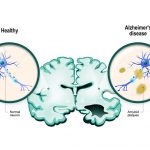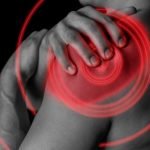SHARUM SHARIF, ND
Emotionally traumatized people are stuck in survival mode, constantly fighting off unseen enemies, which leaves no room for nurturing, caring, or love in their lives. They are often unable to connect and feel intimate with others, and they are consequently unable to develop deep and meaningful relationships, even if they have a large social network. Sometimes, such individuals are unable to feel and demonstrate empathy towards others due to their own disconnectedness. Consequently, emotional trauma can have such devastating effects that it can cause otherwise empathetic people to be misdiagnosed with psychopathy. Those dealing with emotional trauma may need to learn how to turn off their natural vigilance. Doing so will allow them to experience emotional intimacy with others once again. Restoring their sense of physical and psychological safety is a key component in recovery from emotional trauma.
Emotional Trauma During the COVID-19 Pandemic
The COVID-19 pandemic seems to have caused a state of collective emotional trauma, and the mental health consequences of this pandemic are still being revealed. Monika Dargis, PhD, an assistant professor of psychology in psychiatry, noted that “during the first year of the pandemic, reports of PTSD among healthcare workers and other first responders abounded. Now, survivors of COVID-19 are reporting trauma-related symptoms, especially those individuals who had complicated and prolonged hospitalizations.”1 We have all experienced forms of stress before the pandemic; however, stress and reports of exacerbated symptoms of other psycho-emotional complaints such as anxiety, depression, panic attacks, and PTSD have surged over the past few years. According to an article in the New England Journal of Medicine, “The Covid-19 pandemic has alarming implications for individual and collective health and emotional and social functioning.”2 Reports of trauma-related symptoms are similarly becoming more frequent for those that have lost loved ones to COVID-19.1
PTSD, Panic Attacks, and Panic Disorder
PTSD and panic attacks come with their own sets of symptoms, diagnostic criteria, and treatment options. As differentiated from PTSD, symptoms of a panic attack may include intense anxiety/fear, mental confusion, tachycardia, weakness, faintness, shaking, tingling or numbness, diaphoresis, dyspnea, a sense of impending doom or terror, or a fear of dying. A person with PTSD can also experience these same physical sensations, but there are other accompanying symptoms and/or triggers. During a panic attack, it is evident the whole body, and not just the brain, experiences the attack. Additionally, the anxiety/fear experienced during a panic attack may come on for no obvious reason. In contrast, panic attacks due to PTSD are often secondary to the recollection or re-experience of a traumatic event. Such panic attacks may be brought on by thoughts, flashbacks, or even dreams.
Frequent panic attacks constitute a panic disorder. Panic disorder may also involve agoraphobia, which also appears to be on the rise during the COVID-19 pandemic. In my clinical experience, I have found that many PTSD patients present with panic attacks, but just because a patient is having panic attacks, it does not mean they necessarily have PTSD. Hyperarousal symptoms seen in PTSD, such as alarm after hearing a loud noise, can also be a trigger for a subsequent panic attack.
Some PTSD symptoms overlap with symptoms of other conditions such as anxiety, depression, or even traumatic brain injury. To further complicate the matter, brain imaging for PTSD patients is often normal. These facts all make diagnosing PTSD difficult.
Causes of PTSD
PTSD may be caused by physical and/or emotional events and can stem from traumas experienced throughout all stages of life (potentially beginning even in the womb). These types of events can include:
- Epidemic and pandemic diseases
- Military combat
- Sexual assault
- Natural disasters
- Climate change
- Terrorist attacks
- Domestic violence
- Loss of a loved one
- Loss of income
- Other intense and frightening incidents
We can even carry trauma forward from generation to generation. Indirect trauma can produce psychological scars and people don’t necessarily have to experience violence or trauma directly to be traumatized. Basically, anything that overwhelms our physical and emotional capacities can bring on feelings of trauma and cause PTSD.
It’s important to note that emotional trauma can also arise from fears of future threats, giving rise to the condition of pre-traumatic stress disorder. According to a study on soldiers deployed to Afghanistan, PTSD “is a diagnosis related to the past. Pre-traumatic stress reactions, as measured by intrusive involuntary images of possible future stressful events and their associated avoidance and increased arousal, have been overlooked in the PTSD literature.”3 I believe many of us have developed both pre- and post-traumatic stress during the COVID-19 pandemic.
Looking Beyond Conventional Treatment
Most effective therapies for emotional trauma and PTSD focus on coping strategies such as counseling, mindfulness, journaling, physical exercise, and finding supportive connections. While conventional psychotherapy can also offer much help to patients struggling with mental or emotional issues, it often provides only slow progress and is sometimes outright ineffective for treating patients suffering from trauma, including those with PTSD and/or panic attacks. The consequences of such ineffective treatment are dire, and according to the National Veteran Suicide Prevention Annual Report, an average of 17.2 veteran suicides per day occurred in 2019.4 I have seen countless veterans in my practice who had been receiving counseling for years yet continued to struggle with the debilitating daily effects of flashbacks of war and the consequent panic attacks that ensued. It was not until they started receiving mind-body therapies that their recovery took a turn for the better.
Many alternative medical practitioners believe that we can offer our trauma patients additional tools beyond simple coping strategies. Mind-body therapeutics including homeopathy, Emotional Freedom Technique (EFT), and Eye Movement Desensitization and Reprocessing (EMDR) can often profoundly help with PTSD and panic attacks. I let patients know it is possible for them to rewire their brain, get past a traumatized and fear-driven mindset, and live a joyous and fulfilling life once again. Every chance I get, I try to offer them hope, and over the years, I have helped hundreds of emotionally traumatized patients in my practice. Some of these patients had been using various psychiatric medications and/or receiving psychotherapy for extended periods of time, yet continued to suffer from the horrible, life-altering, and often disabling symptoms related to their trauma.
We need a paradigm shift in the way we care for patients who suffer from emotional trauma, PTSD, and/or panic attacks. Emotional trauma leaves an imprint on the physical body as well as on the mind – both conscious and subconscious. The body keeps track of emotional trauma whether one is aware of it or not. The trauma, and the emotions associated with it, eventually become inextricably linked with sensations in the body, and vice-versa. So, to truly help patients with PTSD and heal the long-term effects of trauma, we need to use hands-on, body-oriented therapies. Using these types of therapies, as I do in my practice (particularly homeopathy and EFT), we can help patients recondition and heal both their bodies and their minds.
Homeopathy for PTSD
Homeopathy is a particularly valuable tool in the treatment of PTSD and emotional trauma. It is possible to say that mental/emotional maladies are essentially energy blockages. Many practitioners believe that homeopathic remedies remove these energy blockages, freeing patients from the dysfunctional energetic patterns we they become entrenched in. Remedies that work on the mental/emotional level can bypass the conscious mind and directly influence the subconscious. Patients often experience rapid healing of their thoughts and emotions – and eventually the physical symptoms that accompany them – without the long and arduous work of psychotherapy and without the side effects common to pharmaceutical medications. As a rule, homeopathic remedies usually stimulate mental/emotional healing more rapidly than physical healing, and it may take longer for physical symptoms to begin to improve.
Constitutional and Acute Prescribing
There are 2 methods of prescribing homeopathic remedies – constitutional prescribing and acute prescribing. In constitutional prescribing, the goal is to find a remedy that matches the person’s physical, mental, and emotional symptoms. In acute prescribing, on the other hand, the goal is to find a remedy that addresses the most distressing symptom or symptoms, be it physical, mental, or emotional. To help with more severe mental/emotional complaints, acute prescribing is often more effective. Sometimes the acute remedy and the constitutional remedy are one in the same; however, the importance of distinguishing these 2 types of prescribing is that an acute remedy may be needed before the symptom picture of the necessary constitutional remedy can become clear.
Since there are numerous remedies for treating PTSD (and emotional trauma in general), an extensive intake is often necessary to find the correct remedy for both acute and constitutional prescribing. Using deep empathy to understand each patient and the cause of their suffering is key to finding the right remedy. There is usually a unique psycho-emotional, behavioral, and energetic pattern that each traumatized patient experiences. In fact, many patients could experience the same emotionally traumatic event, but each patient could end up in a uniquely dysfunctional psychological state, each requiring a different homeopathic remedy.
Let’s look at 2 different ways of experiencing trauma and how we might treat each case differently homeopathically. A patient experiencing grief and loss from heartbreaking news like the death of a loved one may require the remedy Ignatia. On the other hand, if a patient is experiencing shock from witnessing a tragic accident, like someone being run over by a car, a different remedy, such as Arnica or Aconitum may be appropriate.
I prescribe Aconitum for the treatment of emotional trauma, PTSD, and panic attacks far more than any other remedy; its key features beautifully match the top signs and symptoms of panic attacks. Ignatia is likely my second most-used remedy for emotional trauma. Other common PTSD and trauma remedies include Arnica, Arsenicum album, Aurum metallicum, Natrum muriaticum, Opium, Phosphorus, and Stramonium. It is important to consult your individual notes and references for each case; finding the right remedy requires diligence and continued learning in the practice of homeopathy.
Since homeopathic remedies function on an energetic or vibrational level, patients taking pharmaceutical medications and/or supplements (really all chemicals) don’t need to worry about negative interactions. The remedies work through and beyond these other treatments. Many patients respond incredibly well to homeopathy and end up living happy and productive lives. It is noteworthy that these patients don’t tend to require their remedy indefinitely, or at least not regularly. At some point, the effect of the trauma is healed. Finally, I have found that homeopathic remedies can often enhance the results of other therapies, be they body-centered or more traditional psychotherapy. By creating an emotional shift at a deep subconscious level, the remedies often gently push stuffed-up emotions out, which is often necessary for healing.
Summary
Emotionally traumatized patients may always remember the traumatizing event. With the proper care, they do not have to feel the negative effects of the trauma on their minds and in their bodies forever. For your patients to experience joy again and live a harmonious and fulfilling life, they need to be encouraged to be proactive and take control of their mental, emotional, and physical health. As practitioners, we are uniquely situated to help these patients do just that.
References
- Coping with PTSD from the COVID-19 pandemic. Weill Cornell Medicine. January 4, 2022. Available at: https://weillcornell.org/news/coping-with-ptsd-from-the-covid-19-pandemic. Accessed February 27, 2022.
- Pfefferbaum B, North CS. Mental Health and the Covid-19 Pandemic. N Engl J Med. 2020;383(6):510-512.
- Berntsen D, Rubin DC. Pretraumatic Stress Reactions in Soldiers Deployed to Afghanistan. Clin Psychol Sci. 2015;3(5):663-674.
- Office of Mental Health and Suicide Prevention. 2021 National Veteran Suicide Prevention Annual Report. US Department of Veterans Affairs. September, 2021. Available at: https://www.mentalhealth.va.gov/docs/data-sheets/2021/2021-National-Veteran-Suicide-Prevention-Annual-Report-FINAL-9-8-21.pdf. Accessed February 27, 2022.

Sharum Sharif, ND, is a 2003 graduate of Bastyr University. He has a primary care practice in Kent, WA, and is an affiliate clinical faculty at Bastyr University. His website, available at https://drsharif.com/, contains his 2014 AANP talk on homeopathic psychiatry, his 2019 AANP talk on homeopathic prevention and treatment of epidemics and pandemics, and PTSD patient testimonials. Dr Sharif has presented at numerous naturopathic conventions and is the author of the textbook Visual Homeopathy. His teaching website can be found at https://visualhomeopathy.com/.



